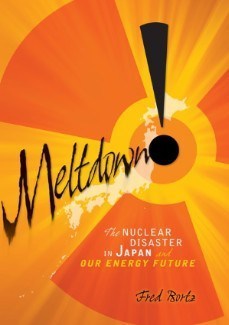MELTDOWN!
Join the blog tour next week and me on March 7 for Dr. Fred Bortz's Meltdown Blog Tour. As guest blogger (the first!), Dr. Fred will write about his path from physicist and work with nuclear reactors to writing for children and young people. It's a fascinating story.
Here's the tour schedule:
Spellbinders Monday 3/5/12 plus giveaway Monday 3/19/12
Simply Science Wednesday 3/7/12
USA Science and Engineering Festival Blog (perhaps on Huff Post) Wednesday 3/7/12
Writing with a Broken Tusk March 8
Liz Jones Friday 3/9/12
TFCB Blog Lerner Books Blog 3/12/12
Cynsations Giveaway 3/12/12
Meltdown!
The Nuclear Disaster in Japan and Our Energy Future
By Fred Bortz
Twenty-first Century Press, 2012
ISBN # 978-0-7613-8660-5
Nonfiction
Grades 6-12
"Although it strikes suddenly, the Great Tohoku Earthquake has been building up for hundreds of years. Like all quakes, it happens because Earth's outer rocky layer, called the crust, is made up of many large, slow-moving pieces. These are called plates."
From an anecdotal introduction to the thought-provoking, open-ended question of where should we get our power, physicist Fred Bortz uses his background to write a book that provides an insight into the nuclear disaster at the Fukushima nuclear plant. The book reads like an exciting story and has a terrific story arc as he explains the nuclear power and the events leading to this disaster. And while the outcome is known generally, the book gives a full explanation of what happened and addresses the need to keep current by checking back with his website for updates.
The background of nuclear energy is explained so well, including nuclear forces, that any reader can understand the science behind nuclear power. The history of radiation and how it developed through the years is explored from the atomic bomb to harnessing the energy for our ever-increasing need for electricity. Meltdown! takes the reader inside to explore and understand the series of events resulting from the earthquake and tsunami.
Meltdown! goes on to detail how and why other nuclear disasters like Chernobyl and Three Mile Island occurred and what consequences they left behind in damage and future safety measures. The intensity in the text builds until the Fukushima disaster reaches its horrifying series of problems following the tsunami.
The conclusion provides readers with an insightful look at the advantages and disadvantages of all power sources and why none may be perfect. But as the need for more energy grows, hard decisions will have to be made. The readers of this book will probably be some of the ones making those decisions. A fair look at the facts may allow these readers the questioning ability and insight needed to do just that.
Activity 1 (middle school)
Examine the major nuclear disasters side by side. Then create a way to compare and contrast them in a visual presentation.
More websites and supplemental reading lists are also here (look to the right column).
Here is the government website on nuclear energy.
National Science Standards: nuclear processes; energy
Book provided by Lerner.








Shirley Smith Duke's Blog




